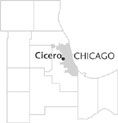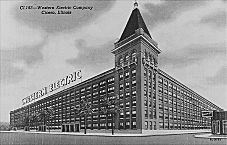Flower Delivery to Cicero, Illinois - Cicero Florist
CLICK BANNER BELOW TO ORDER SAME DAY FLOWER DELIVERY TO CICERO, IL
Cicero, IL Florist. Cicero, IL Flower Shop. Cicero, IL Flower Delivery. Florist in Cicero, IL. Cicero, IL flower delivery. Flowers Cicero, IL
Cicero (originally known as Hawthorne) is a suburb of Chicago and an incorporated town in Cook County, Illinois, United States. The population was 83,891 at the 2010 census.[6] As of 2019, the town had a total population of 80,796,[7] making it the 11th largest municipality in Illinois. The town of Cicero is named after Marcus Tullius Cicero, a Roman statesman and orator.
History[edit]
Originally, Cicero Township occupied an area six times the size of its current territory. Weak political leadership and town services resulted in cities such as Oak Park and Berwyn voting to split off from Cicero, and other portions, such as Austin, were annexed into the city of Chicago.[8]
By 1911, an aerodrome called the Cicero Flying Field had been established as the town's first aircraft facility of any type,[9] located on a roughly square plot of land about 800 meters (1/2-mile) per side, on then-open ground at 41°51′19.03″N 87°44′56.5″W by the Aero Club of Illinois, founded on February 10, 1910.[10] Famous pilots like Hans-Joachim Buddecke, Lincoln Beachey, Chance M. Vought and others flew from there at various times during the "pioneer era" of aviation in the United States shortly before the nation's involvement in World War I, before the field closed in mid-April 1916.[11]
Al Capone built his criminal empire in Chicago before moving to Cicero to escape the reach of Chicago police.[12] The 1924 Cicero municipal elections were particularly violent due to gang-related efforts to secure a favorable election result.
On July 11–12, 1951, a race riot erupted in Cicero when a white mob of around 4,000 attacked and burned an apartment building at 6139 W. 19th Street that housed the African-American family of Harvey Clark Jr., a Chicago Transit Authority bus driver who had relocated to the all-white city. Governor Adlai E. Stevenson was forced to call out the Illinois National Guard. The Clarks moved away and the building had to be boarded up.[13] The Cicero riot received worldwide condemnation.[14]
Cicero was taken up and abandoned several times as site for a civil rights march in the mid-1960s. Cicero had a sundown town policy prohibiting African Americans from living in the city.[15] The American Friends Service Committee, Martin Luther King Jr., and many affiliated organizations, including churches, were conducting marches against housing and school de facto segregation and inequality in Chicago and several suburbs, but the leaders feared too violent a response in Chicago Lawn and Cicero.[16] Eventually, a substantial march (met by catcalls, flying bottles and bricks) was conducted in Chicago Lawn, but only a splinter group, led by Jesse Jackson, marched in Cicero.[17] The marches in the Chicago suburbs helped galvanize support for the passage of the Civil Rights Act of 1968, extending federal prohibitions against discrimination to private housing. The act also created the United States Department of Housing and Urban Development's Office of Fair Housing and Equal Opportunity, which enforces the law.
The 1980s and 1990s saw a heavy influx of Hispanic (mostly Mexican and Central American) residents to Cicero. Once considered mainly a Czech or Bohemian town, most of the European-style restaurants and shops on 22nd Street (now Cermak Road) have been replaced by Spanish-titled businesses. In addition, Cicero has a small black community.
Cicero has seen a revival in its commercial sector, with many new mini-malls and large retail stores. New condominiums are also being built in the city.
Cicero has long had a reputation of government scandal. By 2002, Republican Town President Betty Loren-Maltese was sent to federal prison in California, for misappropriating $12 million in funds.[18][19]
Geography[edit]
According to the 2010 census, Cicero has a total area of 5.86 square miles (15.18 km2), all land.[20] Cicero formerly ran from Harlem Avenue to Western Avenue and Pershing Road to North Avenue; however, much of this area was annexed by Chicago.
Landmarks[edit]
-
St. Mary of Czestochowa, a Neo-Gothic church built in the Polish Cathedral style along with the sculpture of Christ the King by famed sculptor Professor Czesław Dźwigaj, who also cast the monumental bronze doors at St. Hyacinth's Basilica in Chicago. The church's other claim to fame is as the site of Al Capone's sister Mafalda's wedding in 1930.
-
J. Sterling Morton High School, East Campus, also known as Morton East High School, was built in 1894. The original school was destroyed by fire in 1924, and the current building was constructed. Located at 2423 S. Austin Blvd, Morton East serves residents of Cicero.
-
Chodl Auditorium, located inside Morton East High School, was built in 1924 (completed 1927) to replace the 1,200-seat auditorium which was destroyed by fire. The auditorium was originally a dual-purpose room, serving as a gymnasium for students, and was originally built for this purpose. In 1967 the school stopped using the auditorium as a gymnasium. Chodl Auditorium is among the largest non-commercial proscenium theatres in the Chicago Metropolitan Area and is listed with the National Register of Historic Places.
-
Hawthorne Works Tower, one of the original towers of the enormous Western Electric manufacturing plant that once stood east of Cicero Avenue, is still located behind the Hawthorne Works Shopping Center near the corner of Cermak Road (22nd Street) and Cicero Avenue.
-
Chicagoland Sports Hall of Fame.
Racetracks[edit]
On the south side of Cicero, there were two racetracks. Hawthorne Race Course, located in Cicero and Stickney, is a horse racing track still in operation. Just north of it was Chicago Motor Speedway at Sportsman's Park, which was formerly Sportsman's Park Racetrack (for horse racing) for many years. This Sportsman's Park facility is now closed, acquired by the Town of Cicero, and has since been demolished. Facilities of the Wirtz Beverage Group have been built on the west half and a Walmart built on the east half.
Climate[edit]
| Cicero |
| Climate chart (explanation) |
|
J
|
F
|
M
|
A
|
M
|
J
|
J
|
A
|
S
|
O
|
N
|
D
|
|
|
|
|
|
|
|
|
|
|
|
|
|
| Average max. and min. temperatures in °C |
| Precipitation totals in mm |
| Source: [21]
|
|
|
|
|
Demographics[edit]
| Historical population |
| Census |
Pop. |
|
%± |
| 1860 |
1,272 |
|
— |
| 1870 |
1,545 |
|
21.5% |
| 1880 |
5,182 |
|
235.4% |
| 1890 |
10,204 |
|
96.9% |
| 1900 |
16,310 |
|
59.8% |
| 1910 |
14,557 |
|
−10.7% |
| 1920 |
44,995 |
|
209.1% |
| 1930 |
66,602 |
|
48.0% |
| 1940 |
64,712 |
|
−2.8% |
| 1950 |
67,544 |
|
4.4% |
| 1960 |
69,130 |
|
2.3% |
| 1970 |
67,058 |
|
−3.0% |
| 1980 |
61,232 |
|
−8.7% |
| 1990 |
67,436 |
|
10.1% |
| 2000 |
85,616 |
|
27.0% |
| 2010 |
83,895 |
|
−2.0% |
| 2019 (est.) |
80,796 |
[4] |
−3.7% |
| U.S. Census Bureau[22]
|
As of the 2010 census, 83,891 people, 22,101 households, and 17,752 families resided in the town. The population density was 14,315.9 people per square mile (5,527.4/km2). There were 24,329 housing units at an average density of 4,151.7 per square mile (1,600.6/km2). The racial makeup of the town was 51.9% White (9.2% Non-Hispanic white), 3.8% African American, 0.8% Native American, 0.6% Asian, 0.1% Pacific Islander American, 39.3% some other race, and 3.5% from two or more races. 89.6% of the population were Hispanic or Latino of any race, with 80.2% of Mexican descent.[6]
There were 22,101 households, out of which 57.9% had children under the age of 18 living with them, 52.3% were headed by married couples living together, 17.6% had a female householder with no husband present, and 19.7% were non-families. 15.5% of all households were made up of individuals, and 5.5% were someone living alone who was 65 years of age or older. The average household size was 3.79, and the average family size was 4.19.[6]
The age distribution at the 2010 census was 33.8% under the age of 18, 11.6% from 18 to 24, 30.9% from 25 to 44, 17.7% from 45 to 64, and 5.9% who were 65 years of age or older. The median age was 27.8 years. For every 100 females, there were 103.7 males. For every 100 females age 18 and over, there were 103.9 males. Of the total population, 50.9% are male and 49.1% are female.[6]
As of the 2011 American Community Survey, the median income for a household in the town was $39,557, and the median income for a family was $42,235. Male full-time workers had a median income of $31,603 versus $31,117 for females. The per capita income for the town was $14,339. About 15.6% of families and 18.3% of the population were below the poverty line, including 22.9% of those under age 18 and 16.2% of those age 65 or over.[23]
As of 2011, 52.5% of occupied housing units were owned properties, and 47.5% were rentals. There were 4,667 vacant housing units. The average age of home properties was greater than 66 years.[24]
The top five non-Hispanic ancestries reported in Cicero as of the 2000 census were Polish (4.7%), Irish (3.7%), German (3.7%), Italian (3.0%) and Czech (2.3%).[25]
Cicero is a factory town. As of 1999, about a quarter of the city contained one of the greatest industrial concentrations in the world. There were more than 150 factories in 1.7 mi (2.8 km), producing communications and electronic equipment, sugar, printing presses, steel castings, tool and die makers' supplies, forging and rubber goods.[citation needed]
Government[edit]
Most of Cicero is in Illinois' 4th congressional district; the area south of the railroad at approximately 33rd Street is in the 3rd district.[26]
The United States Postal Service operates the Cicero Post Office at 2440 South Laramie Avenue.[27]
Education[edit]
Cicero is served by Cicero Elementary School District 99 and comprises 16 schools, making it one of the largest public school districts outside of Chicago. Elementary students attend the following schools, depending on residency: Burnham (K-6), Cicero East (4-6), Cicero West (PK-4), Columbus East (4-6), Columbus West (PK-4), Drexel (K-6), Early Childhood Center (PK), Goodwin (PK-6), Liberty (K-3), Lincoln (PK-6), Roosevelt (5-6), Sherlock (PK-6), Warren Park (PK-6), Wilson (K-6), and Unity Junior High (7-8), which is separated into East/West sections. East side being held for eighth graders & seventh graders on the West side. Unity is the second largest middle school in the country. High school students entering their freshman year attend the Freshman Center and then continue high school at Morton East of the J. Sterling Morton High School District 201. The McKinley Educational Center serves as an alternative school for 5th-8th graders and the Morton Alternative School serves as an alternative school for 9th-12th graders
The Roman Catholic Archdiocese of Chicago operates two PK-8 schools in Cicero:
- Our Lady of Charity School[28]
- St. Frances of Rome School[29]
From 1927 until 1972, Cicero was the home of Timothy Christian School.
Cicero is also home to Morton College.
Infrastructure[edit]
Transportation[edit]
Cicero is served by two major railroad lines, the BNSF Railway and the Belt Line Railroad. Public Transportation is provided by Metra BNSF Railway Line between Aurora and Chicago's Union Station with a stop at the Cicero station near Cicero Avenue and 26th Street. Currently, this station is undergoing a much needed reconstruction and expansion by Metra. Also, the CTA Pink Line provides daily service from the 54th/Cermak terminal to the Loop. Its Cicero station is also located in Cicero. Multiple Pace and CTA bus routes cover portions of Cicero.
Fire department[edit]
Cicero is served by the Cicero Fire Department (CFD), with a staff of 68 professional firefighters and 24 paramedics. The CFD operates out of three fire stations.[30]
Notable people[edit]
In popular culture[edit]
- In the show “Chicago PD” Cicero is the hometown of the main character Sargent Hank Voight.
- In the HBO series Boardwalk Empire, Cicero is the home of Al Capone. Many of the episode plots are based in Cicero.
- Cicero is mentioned as the hometown of Jimmy McGill/Saul Goodman and his brother Chuck McGill in Better Call Saul.
- In the musical Chicago Velma Kelly mentions Cicero in the number "Cell Block Tango" as the location of the hotel where she murdered her husband Charlie and sister Veronica.
- In Walker Percy's novel Love in the Ruins, the schismatic American Catholic church establishes Cicero, Illinois as its "new Rome."
- In Bertolt Brecht's The Resistible Rise of Arturo Ui, Cicero is annexed by Chicago, as a satirical allegory for the Nazi annexation of Austria.
- In Guys and Dolls, the Chicago-area gangster "Big Julie" claims to be from "East Cicero, Illinois" (and pronounces the final "s" on Illinois).
- In the 1948 film noir Sorry, Wrong Number, the story takes place in New York City but in flash-backs recounted by several characters we learn that the story actually begins in Chicago and Cicero. The female character Leona Cotterel (Barbara Stanwyck) is the rich, spoiled daughter of the owner of a pharmaceutical company located in Cicero. She lives with her father in a Chicago mansion. A few years later, after she marries, the story moves to Bayonne, New Jersey, and ends in Manhattan and Staten Island.
- Al Bundy from the show Married with Children mentions that he gets his hair cut in Cicero.
- In Guns Under the Counter, on The Fiery Furnaces' album Rehearsing My Choir, Cicero is mentioned in the line "In Cicero, Never stand at a window".
References[edit]
-
^ Jump up to:a b "Town of Cicero". Geographic Names Information System. United States Geological Survey.
-
^ "2019 U.S. Gazetteer Files". United States Census Bureau. Retrieved July 14, 2020.
-
^ "Cicero (town), Illinois". State & County QuickFacts. U.S. Census Bureau. 8 July 2014. Archived from the original on 25 July 2012. Retrieved 17 September 2014.
-
^ Jump up to:a b "Population and Housing Unit Estimates". United States Census Bureau. May 24, 2020. Retrieved May 27, 2020.
-
^ Illinois Regional Archives Depository System. "Name Index to Illinois Local Governments". Illinois State Archives. Illinois Secretary of State. Retrieved May 2, 2013.
-
^ Jump up to:a b c d e "Profile of General Population and Housing Characteristics: 2010 Demographic Profile Data (DP-1): Cicero town, Illinois". U.S. Census Bureau, American Factfinder. Archived from the original on February 12, 2020. Retrieved February 14, 2013.
-
^ "Population and Housing Unit Estimates". Retrieved May 21, 2020.
-
^ "Cicero, IL". Encyclopedia.chicagohistory.org. Retrieved 2012-11-17.
-
^ Gray, Carroll (2005). "CICERO FLYING FIELD - Origin, Operation, Obscurity and Legacy - 1891 to 1916 - OPERATION, 1911 - THE ESTABLISHMENT OF CICERO FLYING FIELD". lincolnbeachey.com. Carroll F. Gray. Retrieved September 7, 2017.
The second great aeronautical event of 1911 around Chicago was the establishment by the A.C.I. of a top-notch flying field named "Cicero Flying Field" (or simply "Cicero") within the township limits of Cicero (bounded by 16th St., 52nd Ave., 22nd St. and 48th Avenue..At some point during May, the A.C.I. was given a five year lease on the Cicero property by the Grant Land Association, Harold F. McCormick's property holding company. At the conclusion of the 1911 Aviation Meet, the hangars in Grant Park were moved to the southern edge of the 2-1/2 sq. mi. lot in Cicero.
-
^ Gray, Carroll (2005). "CICERO FLYING FIELD - Origin, Operation, Obscurity and Legacy - 1891 to 1916 - 1909 & 1910 - GLENN H. CURTISS & THE AERO CLUB OF ILLINOIS". lincolnbeachey.com. Carroll F. Gray. Retrieved September 7, 2017.
The day before his two-day exhibition flights at the Hawthorne Race Track in Cicero, Illinois, on October 16 and 17, 1909, Glenn Curtiss spoke to the Chicago Automobile Club and suggested that an aero club be formed in Chicago. In response to his remarks, the Aero Club of Illinois ("A.C.I.") was incorporated on February 10, 1910, with Octave Chanute as its first president - a perfect choice, to be sure...The second great aeronautical event of 1911 around Chicago was the establishment by the A.C.I. of a top-notch flying field named "Cicero Flying Field" (or simply "Cicero") within the township limits of Cicero (bounded by [West] 16th St., 52nd Ave [S. Laramie Avenue]., 22nd St [West Cermak Road]. and 48th Ave.), conveniently located adjacent to interurban rail service - just a 15 min. 5¢ trip on the Douglas Park "L" from downtown Chicago, and also was served by two streetcar lines.
-
^ Gray, Carroll (2005). "CICERO FLYING FIELD - Origin, Operation, Obscurity and Legacy - 1891 to 1916 - 1916 - THE FINAL FLIGHT & A NEW FIELD". lincolnbeachey.com. Carroll F. Gray. Retrieved September 7, 2017.
On April 16, 1916, when "Matty" Laird took off from Cicero Flying Field, at the controls of his self-designed and self-built Boneshaker biplane and flew to the new Partridge & Keller aviation field at 87th St. and Pulaski Road, in Chicago, Cicero Flying Field ceased to be. The next day, the Aero Club of Illinois (A.C.I.) officially opened its new 640 acre Ashburn Field on land purchased by A.C.I. President "Pop" Dickinson for the A.C.I.. Ashburn was located at 83rd St. and Cicero Avenue, about 7-1/2 miles almost due south of Cicero. All of the hangars and buildings at Cicero had been moved to Ashburn Field some months earlier.
-
^ Duechler, Doug (September 5, 2006). "Part II: From Capone to 'Bohemian Wall Street' to, of course, Betty". News. Wednesday Journal of Oak Park and River Forest. Colorful Cicero. Oak Park, Illinois: Wednesday Journal. LCCN sn91055447. OCLC 24273230. Retrieved November 16, 2016.
-
^ "1951 Race Riots Then & Now - Cicero, IL". Retrieved 2013-05-26.
-
^ Wilkerson, Isabel (2020). The Warmth of Other Suns: The Epic Story of America's Great Migration. New York: Random House. p. 375. ISBN 978-0-679-44432-9.
-
^ Nolte, Robert (September 8, 1966). "'Victory' Means Little to Cicero". Billings Gazette. Billings, Montana. p. 7 – via Newspapers.com.
Although he says the Cicero march was a victory, residents of Cicero probably feel no different about Negroes than they did one week ago. (Negroes are not allowed to live in Cicero, but ironically, 15,000 of them work in the suburb's factories and stores five days a week.)
-
^ "Chicago Lawn". Encyclopedia.chicagohistory.org. Retrieved 2012-11-17.
-
^ "American Experience.Eyes on the Prize.The Story of the Movement". PBS. Retrieved 2012-11-17.
-
^ Engel, Matthew (31 August 2002). "Spirit of Capone lives on in Mobtown, Illinois". The Guardian. Cicero, Illinois. Retrieved 10 April 2011.
-
^ "Betty Loren-Maltese and fellow perps". Ipsn.org. 2001-06-16. Retrieved 2012-11-17.
-
^ "G001 - Geographic Identifiers - 2010 Census Summary File 1". United States Census Bureau. Archived from the original on 2020-02-13. Retrieved 2015-08-01.
-
^ "NASA Earth Observations Data Set Index". NASA. Retrieved 30 January 2016.
-
^ "Historical United States Census Data". Census.gov. Retrieved 2012-11-17.
-
^ "Selected Economic Characteristics: 2011 American Community Survey 1-Year Estimates (DP03): Cicero town, Illinois". U.S. Census Bureau, American Factfinder. Archived from the original on February 12, 2020. Retrieved February 14, 2013.
-
^ "Selected Housing Characteristics: 2011 American Community Survey 1-Year Estimates (DP03): Cicero town, Illinois". U.S. Census Bureau, American Factfinder. Archived from the original on February 12, 2020. Retrieved February 14, 2013.
-
^ Profile of Selected Social Characteristics, Cicero, Illinois Archived 2020-02-12 at archive.today. U.S. Census Bureau. Accessed 2007-04-10.
-
^ "Welcome to The Town of Cicero". Thetownofcicero.com. Retrieved 2012-11-17.
-
^ "Post Office Location - CICERO Archived 2012-07-20 at archive.today." United States Postal Service. Retrieved on April 17, 2009.
-
^ "Welcome To Our Lady of Charity School in Cicero, Illinois". Olc-school.org. 2012-11-13. Retrieved 2012-11-17.
-
^ "St Frances of Rome School". Sfr-school.org. Retrieved 2012-11-17.
-
^ Fire Department. Thetownofcicero.com. Retrieved on 2013-07-21.
External links[edit]
Cicero: An American Town
–by John S. Kociolko
The Town of Cicero is one of the oldest and largest municipalities in the State of Illinois and the only incorporated town in Cook County. It bears the name of the great Roman statesman of the First Century B.C., Marcus Tullius Cicero.
Cicero was one of the greatest statesmen of Rome and an advocate of constitutional government. He died in the political turmoil which followed the assassination of Julius Caesar, but his writings and beliefs survived. Centuries later, the principles Cicero espoused would flourish again in a young republic with a new constitution, capitol and senate, the United States of America.
Illinois, part of the old Northwest Territory which the United States had acquired from Great Britain in 1783, joined the Union as the 21st state in 1818. Most of the early Illinoisans were from the South, where counties were the basis of local government and so the new state was divided into counties. Cook County was established in 1831, comprising what is today Cook, DuPage, Iroquois, Lake, McHenry and Will Counties.
Later settlers from the Northeast preferred their traditional township government and a new state constitution in 1848 authorized the creation of townships. In the following year, Cook County voters approved the new jurisdictions.
Among the townships created by the County Board in 1849 was a 36 square mile tract bounded by what are today Western, North and Harlem Avenues and Pershing Road. On June 23, 1857, 14 electors met to organize a local government for the district, which they named “The Town of Cicero.” Railroads, immigration and the Civil War contributed to economic growth in the new township, which by 1867 numbered 3,000 residents. In that year the state legislature incorporated the Town of Cicero as a municipality with a special charter, which was revised in 1869. Township and municipal functions have subsequently been discharged by a single board of elected officials.
Cicero’s rapid development in these early years now collided with the expanding political power of its neighbor, the City of Chicago. By 1889, Chicago had annexed more than half of the original Town. An 1899 referendum ceded the Austin neighborhood to the city and in the following year land containing a race track was transferred to Stickney Township.
On July 21, 1899, Ernest Hemingway, winner of both the Pulitzer and Nobel prizes, was born within the Town of Cicero, in what is today the Village of Oak Park. In 1901, the three remaining components of the Town- today’s Oak Park, Berwyn and Cicero-voted to separate. The surviving Town of Cicero retained less than six of the 36 square miles carved out in 1849. Immigrants and their families swelled the Town’s population, however, and housing construction boomed within its diminished territory.
In 1901, the three remaining components of the old township – today’s Oak Park, Berwyn and Cicero – voted to separate. The surviving Town of Cicero retained less than six of the 36 square miles carved out in 1849. Immigrants and their families swelled the Town’s population, however, and housing construction boomed within its diminished territory.
Served by the Burlington, Illinois Central, Belt Line, and other railroads, Cicero attracted many industries in the Twentieth Century and became the largest manufacturing center in the state after Chicago. It was also the site of an early airfield in 1911. W. Edwards Deming began his pioneering work on management techniques in the 1920’s at the Western Electric Hawthorne Works, an industrial colossus which employed more than 40,000 people during World War II and was the dominant business in Town for eight decades.
From the early townsmen who fought in the Union Army during the Civil War, Ciceronians have proudly served in the armed forces. Their bravery is exemplified by Boatswain’s Mate Joseph P. Steffan, who died abroad the USS Arizona in the attack on Pearl Harbor, and Capt. Edward C. Krzyzowski, who was posthumously awarded the Medal of Honor for heroism in Korea.
Cicero is composed of eight neighborhoods, with their own district names and characteristics. Two were named for businesses-Grant Works after an 1890 locomotive factory and Hawthorne for an 1850’s quarry, the first Cicero industry. Two bear the family names of local landowners, Warren Park and Drezel, while two more were christened by prominent residents, Clyde, recalling a river in Scotland and Morton Park honoring Julius Sterling Morton, a Nebraskan who served as Agriculture Secretary to President Cleveland. Morton also gave his name to the local high school and college, yet he never lived in the town. Boulevard Manor derives its name from Austin Boulevard. The origin of the title of Parkholme is unknown.
The Town of Cicero has a colorful history, which forms a part of the larger stories of the county, state and nation. Three Presidents-Eisenhower, Reagan, and Bush- visited Cicero on their roads to the White House. We can better understand the present and plan for the future, if we know the achievements of the past.
Nearby Hospitals
Centro Médico
Cicero, IL 60804, USA
Dog Groomer
3405 S 55th Ct, Cicero, IL 60804, USA
Elmhurst Hospital
5600-5698 W 22nd Pl, Cicero, IL 60804, USA
Grupo Reencuentro 4y5 De A.A.
2506 S Laramie Ave, Cicero, IL 60804, USA
Holy Family Medical Clinic
4941 W 14th St, Cicero, IL 60804, USA
La Sagrada Familia Medical Center LLC
6013 Cermak Rd, Cicero, IL 60804, USA
UI HEALTH
4745-51 W Cermak Rd, Cicero, IL 60804, USA
Funeral Homes
Apollaro Funeral Services PC
Cicero, IL 60804, USA
Sourek Manor Funeral Home
5645 35th St, Cicero, IL 60804, USA
Suburban Family Funeral Home
5940 W 35th St, Cicero, IL 60804, USA
Schools
Abe Lincoln Elementary School
3545 S 61st Ave, Cicero, IL 60804, USA
Ciceo West Elimentre
5512 23rd Pl, Cicero, IL 60804, USA
Cicero Board of Education
Cicero, IL 60804, USA
Cicero District 99 Early Childhood Center
5330 W 35th St, Cicero, IL 60804, USA
Cicero East Elementary School
2324 S 49th Ave, Cicero, IL 60804, USA
Cicero Public School District
1630 S 59th Ave, Cicero, IL 60804, USA
Cicero Public School District
1500 S 50th Ave, Cicero, IL 60804, USA
Cicero School District 99 Transportation Center
S 54th Ave, Cicero, IL 60804, USA
Cicero West
4937 W 23rd St, Cicero, IL 60804, USA
Columbus East Elementary School
3100 S 54th Ave, Cicero, IL 60804, USA
DCN Christian Academy
3205 S Austin Blvd, Cicero, IL 60804, USA
Daniel Burnham Elementary School
1630 S 59th Ave, Cicero, IL 60804, USA
Drexel Elementary School
5407 W 36th St, Cicero, IL 60804, USA
Goodwin Elementary School
2625 S Austin Blvd, Cicero, IL 60804, USA
Grade School
1424 S 51st Ave, Cicero, IL 60804, USA
J Sterling Morton Alternative School
1874 S 54th Ave, Cicero, IL 60804, USA
J. Sterling Morton East High School
2423 S Austin Blvd, Cicero, IL 60804, USA
J. Sterling Morton School District 201
5801 Cermak Rd, Cicero, IL 60804, USA
J.S Morton High School District 201
5037 W 31st St, Cicero, IL 60804, USA
Liberty Elementary School
4946 13th St, Cicero, IL 60804, USA
Matts School
2423 S Austin Blvd, Cicero, IL 60804, USA
Mc Kinley Elementary School
1400 S 59th Ave, Cicero, IL 60804, USA
McCarrell Christian Academy
2230 S Laramie Ave, Cicero, IL 60804, USA
Morton East High School
2423 S Austin Blvd, Cicero, IL 60804, USA
Morton Freshman Center
1801 S 55th Ave, Cicero, IL 60804, USA
Our Lady of Charity School
3620 S 57th Ct, Cicero, IL 60804, USA
Rachel Carson Primary School
2550 S 56th Ct, Cicero, IL 60804, USA
Redeemer School
Cicero, IL 60804, USA
Roosevelt Elemantary School
1378-1398 S 49th Ct, Cicero, IL 60804, USA
Saint Anthony School
Cicero, IL 60804, USA
Saint Dionysius School
Cicero, IL 60804, USA
Seguin Training School
Cicero, IL 60804, USA
Sherlock Elementary School
5347 W 22nd Pl, Cicero, IL 60804, USA
Sherlock Elementary School
5347 W 22nd Pl, Cicero, IL 60804, USA
Shoesmith School
1330 E 50th, Cicero, IL 60804, USA
St Frances of Rome School
1401 S Austin Blvd, Cicero, IL 60804, USA
St. Frances of Rome School
1401 S Austin Blvd, Cicero, IL 60804, USA
T Roosevelt Elementary School
1500 S 50th Ave, Cicero, IL 60804, USA
T. G. Masaryk Czech School
5701 W 22nd Pl, Cicero, IL 60804, USA
Unity East Junior High School
2100 S Laramie Ave, Cicero, IL 60804, USA
Unity Junior High School East Campus
2115 S 54th Ave, Cicero, IL 60804, USA
Unity Junior Preschool West Campus
2115 S 54th Ave, Cicero, IL 60804, USA
Uno charter School
5427 25th St, Cicero, IL 60804, USA
Warren Park Elementary School
1225 S 60th Ct, Cicero, IL 60804, USA
Wilson Elementary School
2310 S 57th Ave, Cicero, IL 60804, USA
Woodbine Preschool
3003 50th Ct, Cicero, IL 60804, USA
|
|
Cicero, IL
|
|
 Cook County, 7 miles W of the Loop. The town of Cicero, bordered on the north and east by Chicago, is the suburb nearest to downtown. Named for a town in New York State, Cicero has the only town form of government in Cook County, and is governed by a board of trustees. Present-day Cicero, 5.5 square miles, is less than one-sixth of its original 36 square-mile area. Cook County, 7 miles W of the Loop. The town of Cicero, bordered on the north and east by Chicago, is the suburb nearest to downtown. Named for a town in New York State, Cicero has the only town form of government in Cook County, and is governed by a board of trustees. Present-day Cicero, 5.5 square miles, is less than one-sixth of its original 36 square-mile area.
Ogden Avenue, a former Indian trail, was one of the early thoroughfares through Cicero. The first homesteaders in the town settled on the highest and driest part of Cicero (now Oak Park ). Other families settled along Ogden Avenue, Lake Street, and Cermak Road (22nd Street). When the Galena & Chicago Union Railroad was built westward from Chicago in 1848, Cicero became the first western suburb connected to the city by rail.
In 1857 inhabitants formed the township of Cicero in order to levy taxes for roads and drainage ditches. In 1869 Cicero was incorporated as a town, and that same year, Chicago annexed 11 square miles along Cicero's eastern edge. The town's population of 3,000 dropped 50 percent as a result.
Cicero's location on several rail lines influenced the Chicago & North Western Railway and the Chicago & Alton Railroad companies to establish manufacturing and repair shops there. Small communities began to develop around these and other industries, such as the Brighton Silver Smelting & Refining Company and the Brighton Cotton Mill.
During the 1880s new residents were drawn to the industries in the northern part of the town along the Galena & Chicago Union Railroad. As these communities expanded they began to meld. Some of these areas later separated from Cicero; others, such as Clyde and Hawthorne, remained as names of railroad stops.
In 1889 Chicago again annexed territory along Cicero's eastern border, and by 1897, street railways ran from the city into Cicero. In 1899, Chicago annexed its last portion of Cicero, including the Austin area. Cicero ceded the Hawthorne Race Track to Stickney in 1900, and in 1901, Oak Park and Berwyn separated from Cicero.
WESTERN ELECTRIC COMPANY
 |
Western Electric established a telephone equipment manufacturing plant in Cicero in 1904 employing more than 20,000 people, a number that dwarfed the population of Cicero, which was only 14,557 in 1910. Cicero's population more than quadrupled over the next 20 years, with the majority of newcomers Eastern European immigrants. Yet there was still enough open land for Cicero Field, one of Chicago's earliest airfields.
Cicero's position at the edge of Chicago attracted criminal elements wishing to evade Chicago's law enforcement agencies. In the mid to late 1920s, the gangster Al Capone established his headquarters in Cicero. At the end of the century government officials were convicted on charges of corruption that recalled the town's earlier reputation.
Racial tensions surfaced in Cicero throughout the 1950s and 1960s when residents resisted African Americans moving into their community. At the end of the twentieth century, although Cicero had virtually no black residents, people of Hispanic or Asian ancestry contributed to its mixture of ethnic cultures. Ethnic tensions surfaced in town politics as an entrenched Republican organization reluctantly shared power with an emerging Hispanic majority.
Betsy Gurlacz
Bibliography
Anderson, Alan B., and George W. Pickering. Confronting the Color Line: The Broken Promise of the Civil Rights Movement in Chicago. 1986.
Clark, Eugene. “History of Cicero by a Ciceronian.” Cicero Library Reference Desk, Cicero, IL.
Spelman, Walter Bishop. The Town of Cicero: History, Advantages, and Government. 1923.
|
|
The Electronic Encyclopedia of Chicago © 2005 Chicago Historical Society.
Floral Delivery to Schools & Colleges Nearby
-
ABE LINCOLN ELEM SCHOOL
3545 S 61st Ave
(708) 652-8889
-
COLUMBUS EAST ELEM SCHOOL
3100 S 54th Ave
(708) 652-6085
-
DREXEL ELEM SCHOOL
5407 W 36th St
(708) 652-5532
-
J STERLING MORTON EAST HIGH SCH
2423 S Austin Blvd
(708) 222-5750
-
MCKINLEY ELEM SCHOOL
5900 W 14th St
(708) 652-8890
-
CICERO EAST ELEM SCHOOL
2324 S 49th Ave
(708) 652-9440
-
COLUMBUS WEST ELEMENTARY SCHOOL
5425 W 31st St
(708) 780-4482
-
GOODWIN ELEMENTARY SCHOOL
2625 S Austin Blvd
(708) 652-5500
-
J STERLING MORTON FRESHMAN CNTR
1801 55th Ave
(708) 863-2200
-
MORTON ALTERNATIVE SCHOOLS
1874 S 54th Ave
(708) 222-3080
-
CICERO WEST ELEMENTARY SCHOOL
4937 W 23rd St
(708) 780-4487
-
DANIEL BURNHAM ELEM SCHOOL
1630 S 59th Ave
(708) 652-9577
-
J STERLING MORTON ALTERNATIVE SCH
1874 S 54th Ave
(708) 222-3069
-
LIBERTY ELEM SCHOOL
4946 W 13th St
(708) 780-4475
-
OUR LADY OF CHARITY SCHOOL
3620 S 57th Ct
(708) 652-0262
Flower Delivery Nearby
We offer flower delivery in Cook County, IL to the following zip codes in an award winning gift box and through our affiliated local florists in and around Cicero, Illinois :
60804


Who We Are And What We Do
We add tremendous value for our customers through our decades of experience and carefully curated research on capacity, pricing, and local availability. We also leverage our long standing relationships to bring our customers great offerings with the best savings. With that vast knowledge base and buying power, we're capable of navigating localized fulfillment to help our customers get the best possible outcomes for their floral order. Click here to learn more about who we are and what we do.
Same Day Local Florists Nearby
We contact local florists if need be and check on these abilities if a specific floral delivery need is required. Some of the florists that we may or may not choose for your order are listed below. This is not a complete list nor does it indicate that we recommend, endorse, are affiliated with or we will actually use any of these florists.
- Alyssa's Flowers
1601 South 61st Avenue
- Creaciones Robini Flowers
5918 West Cermak Road
- Fleetwood Florists
2401 South Laramie Avenue
|







